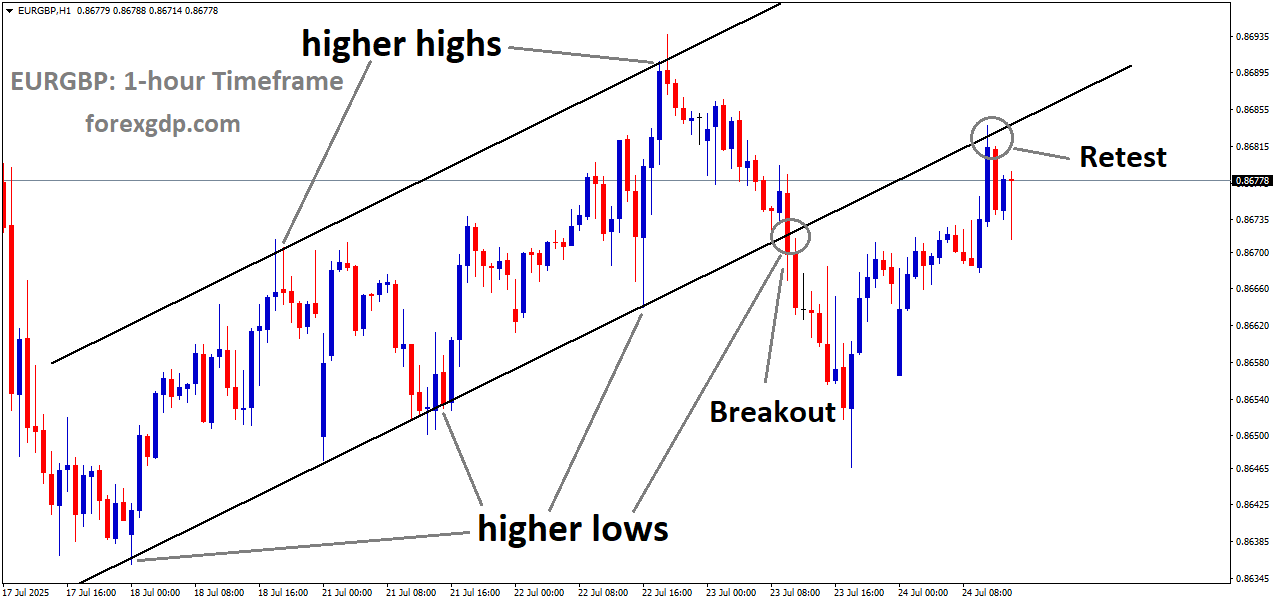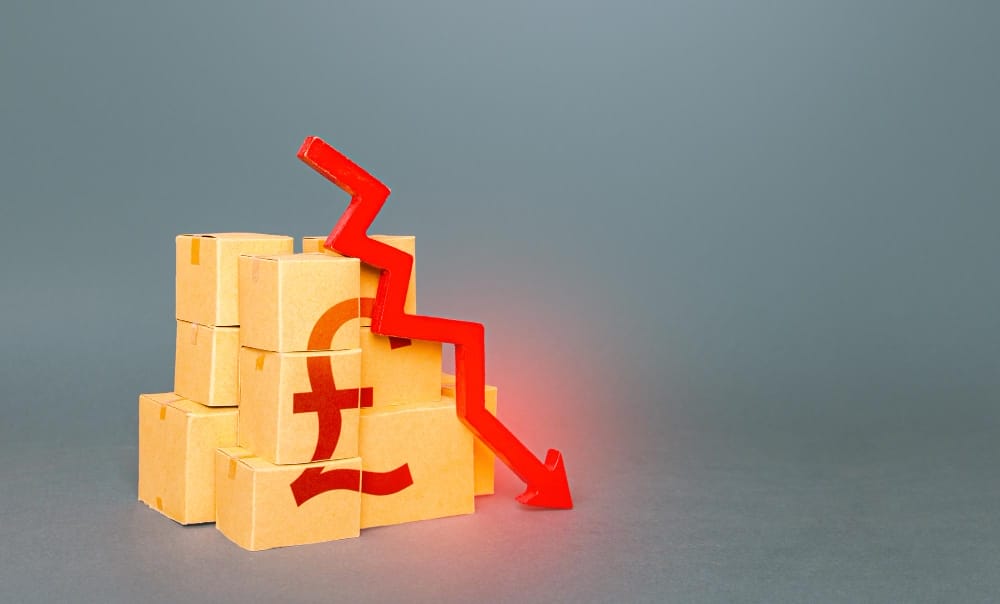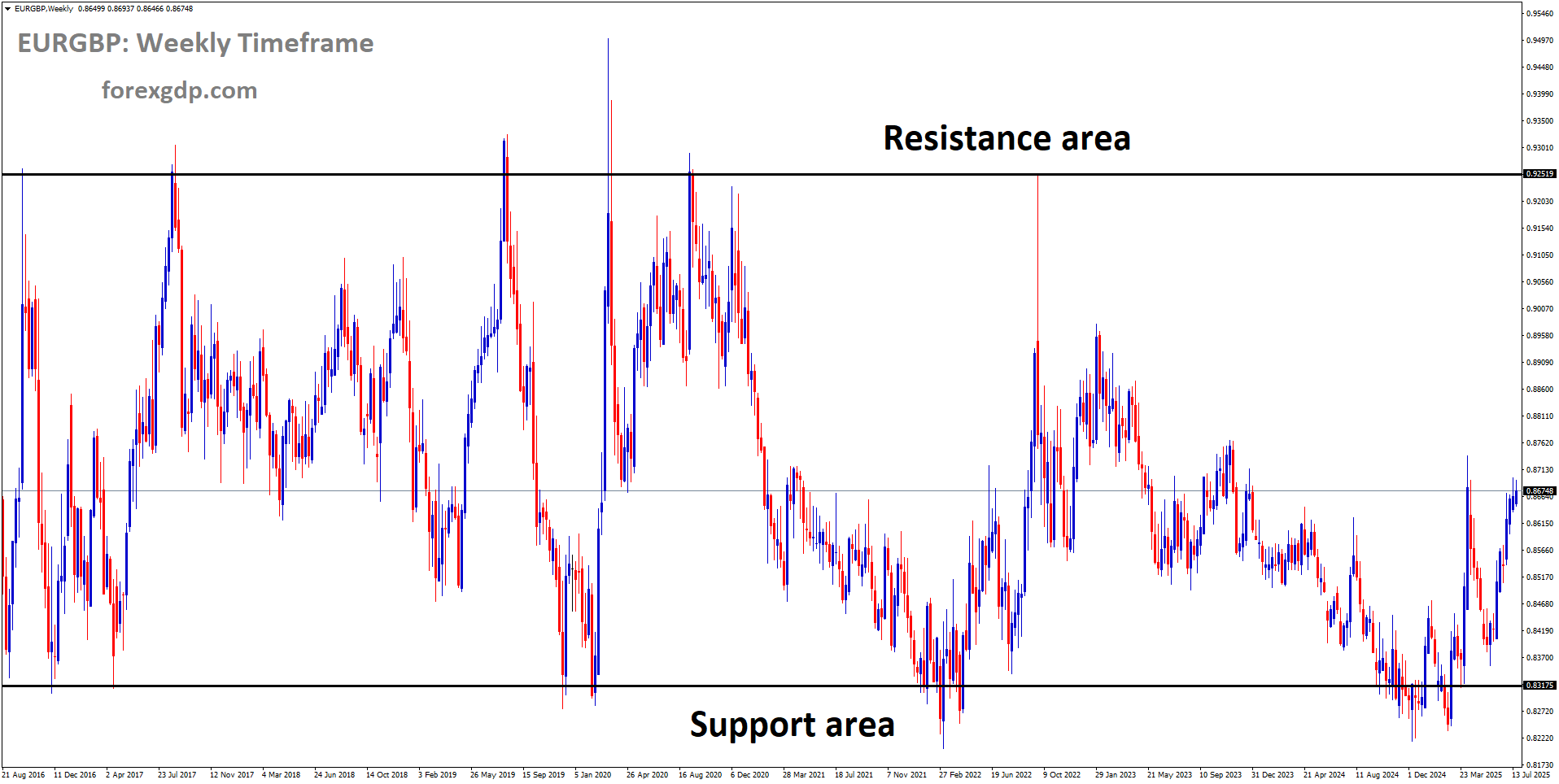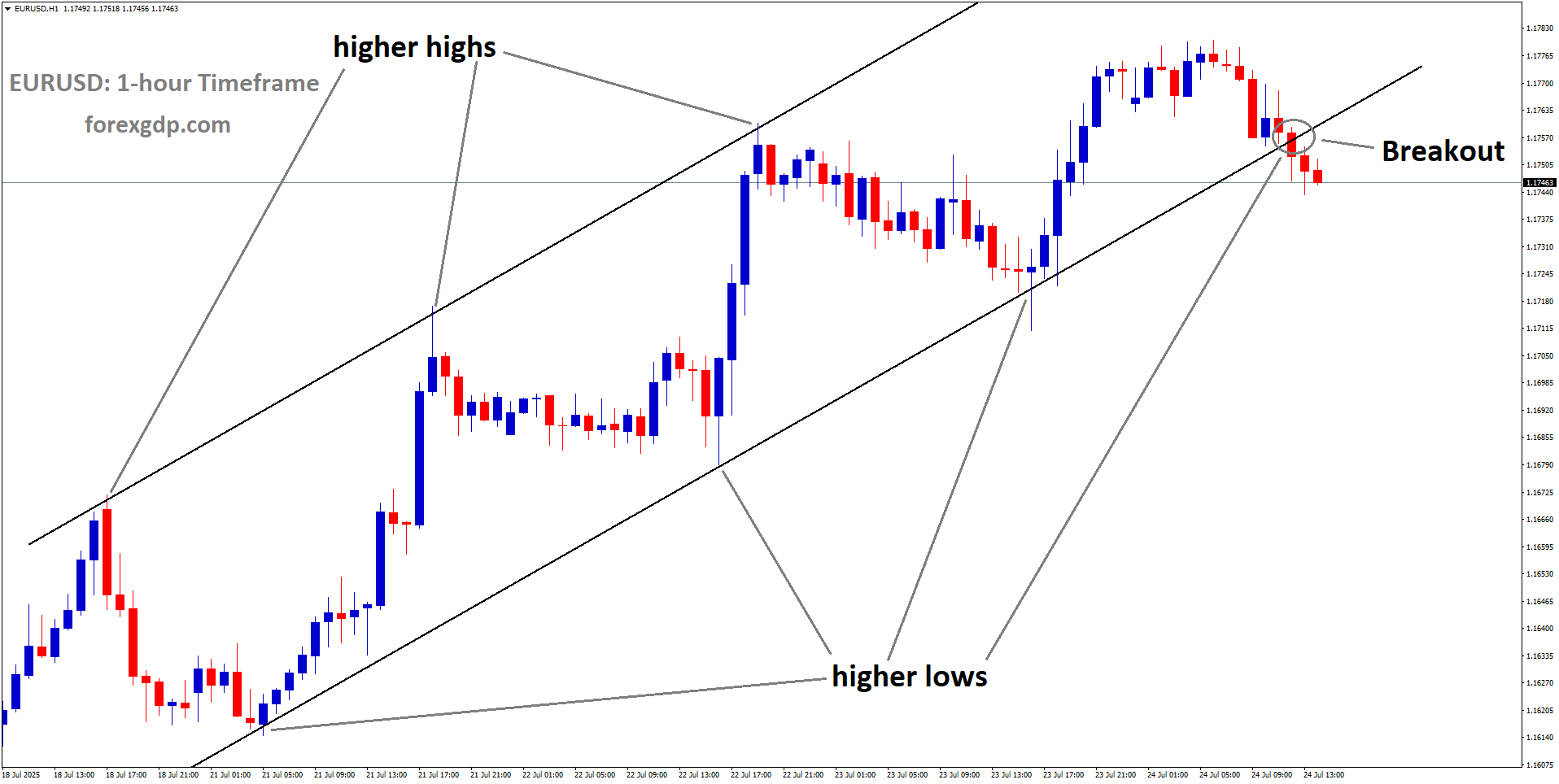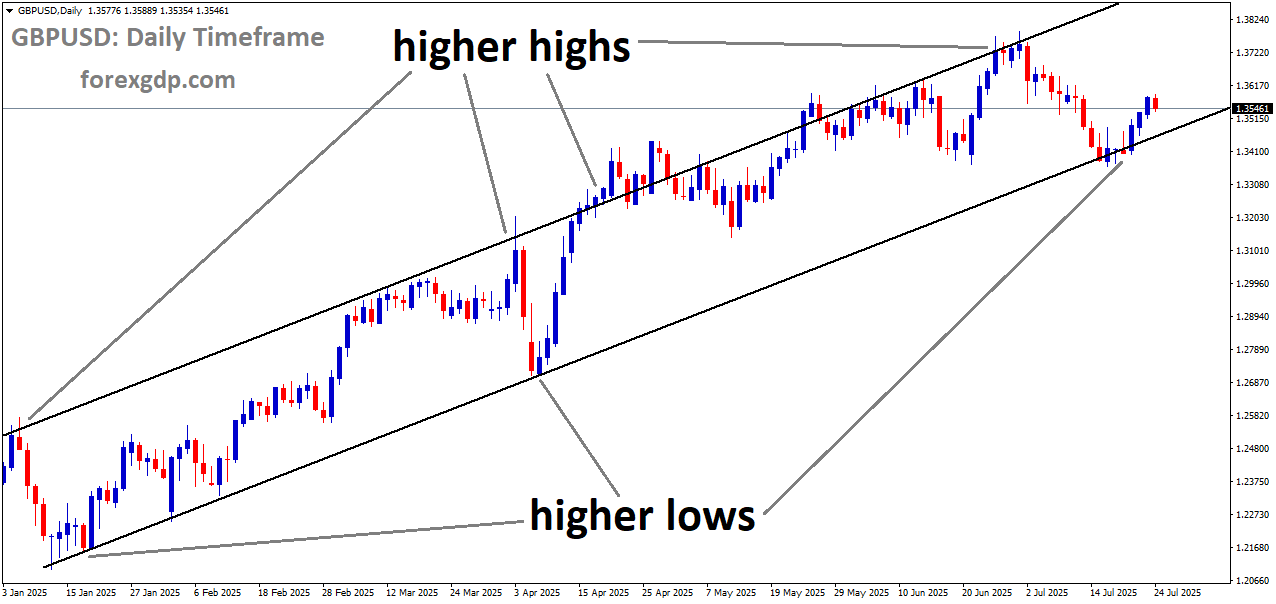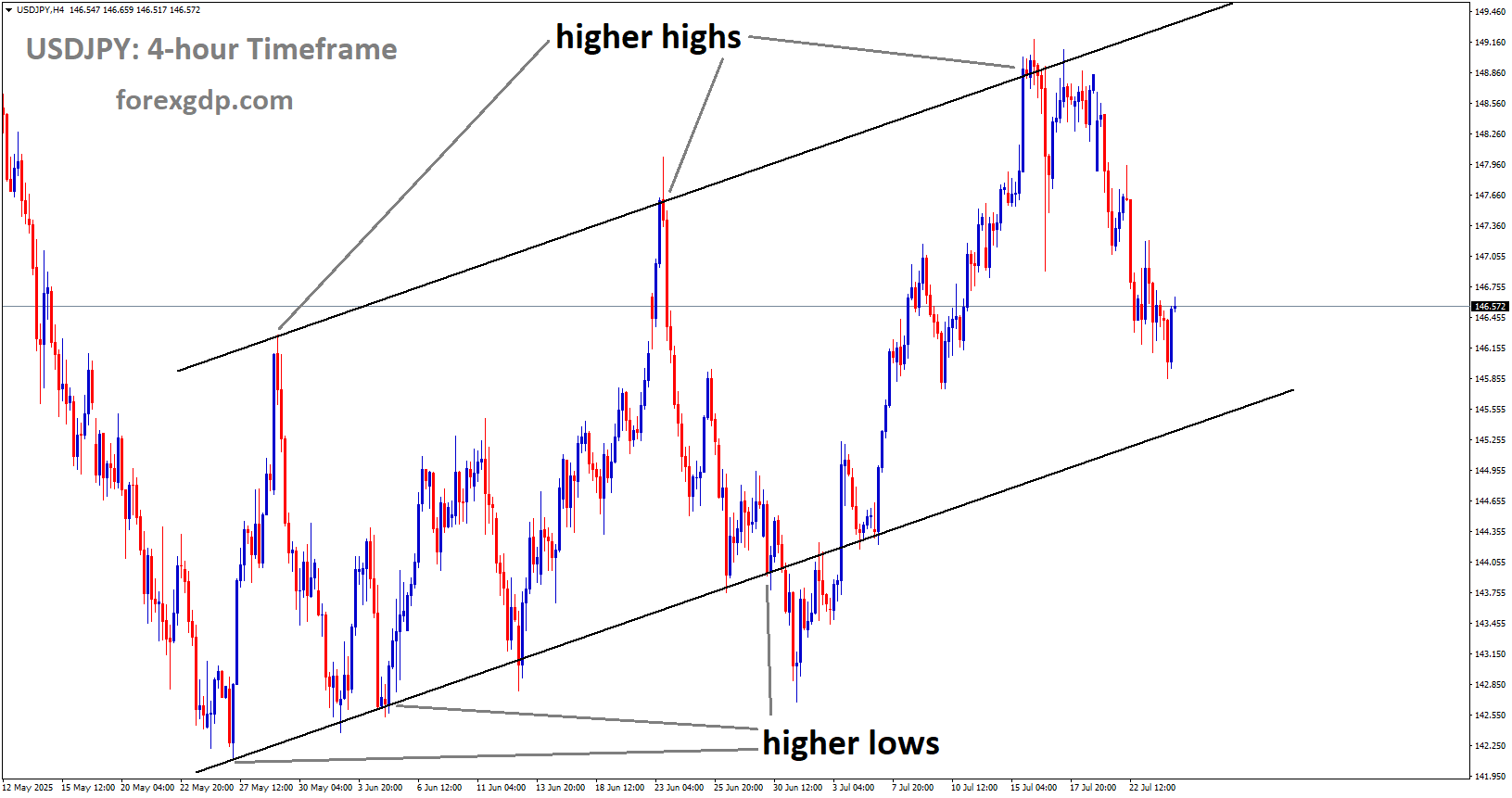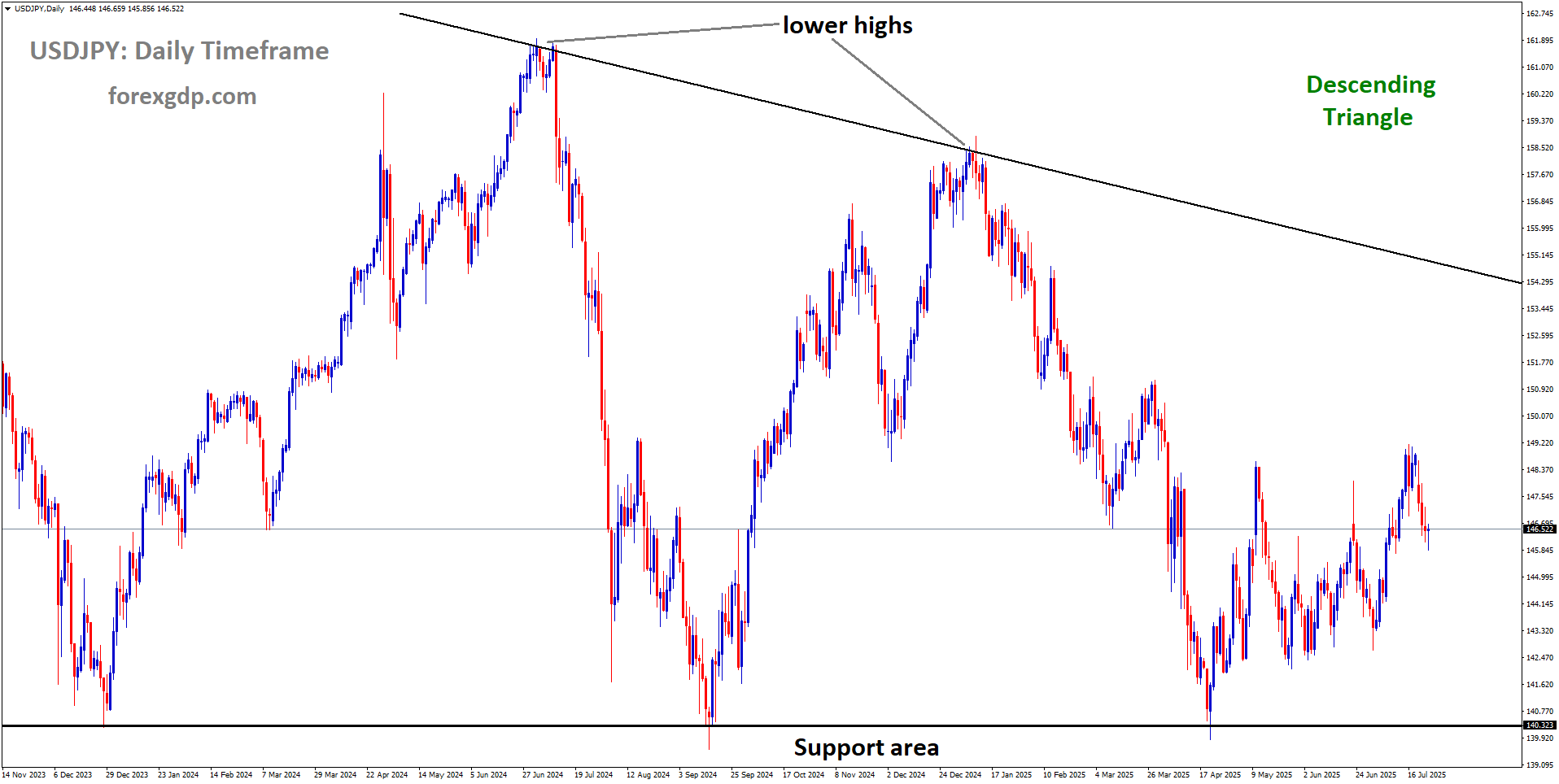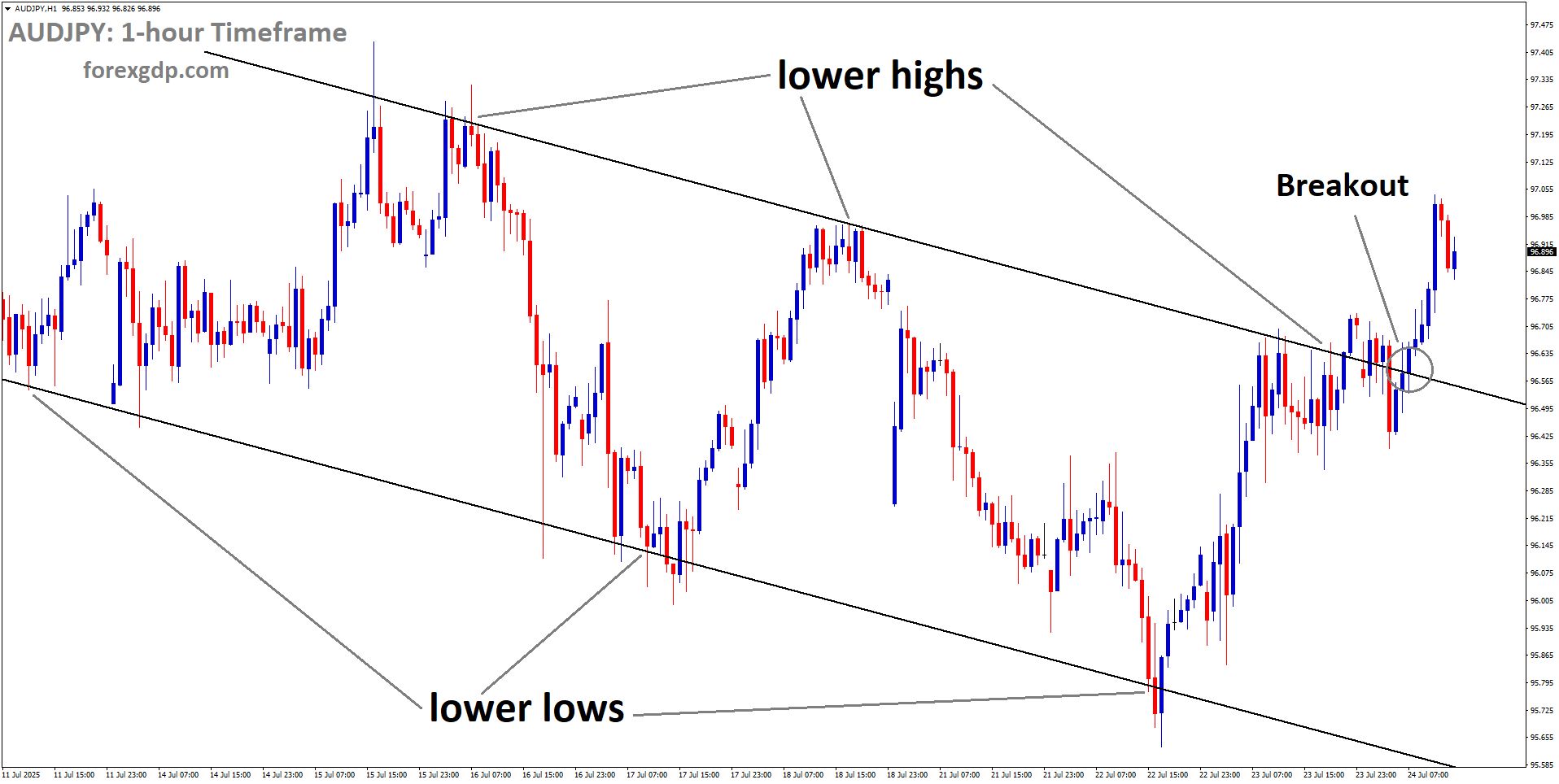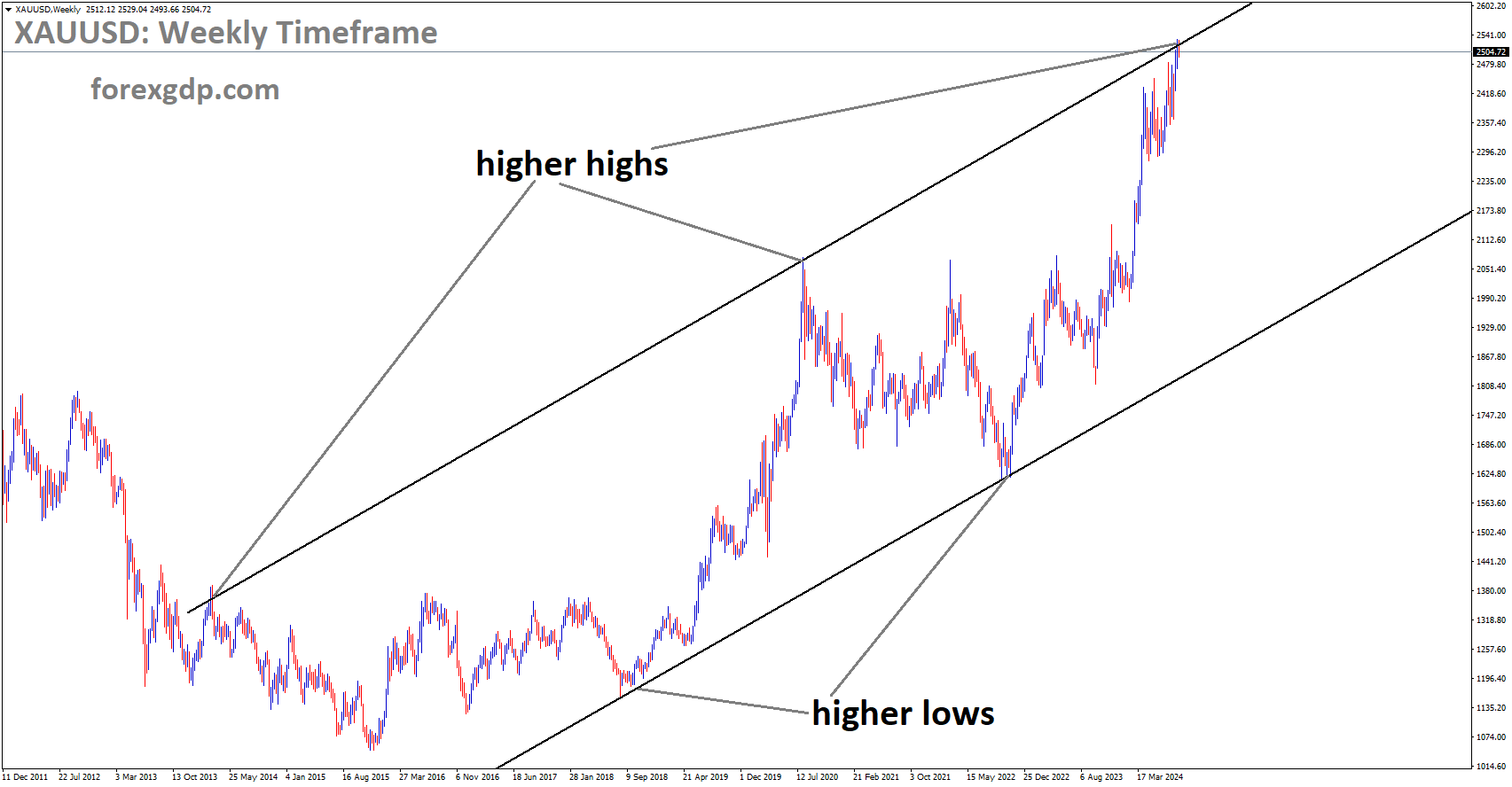EURGBP has reached the retest area of the broken uptrend channel
Daily Forex Trade Setups July 24, 2025
Stay on top of market trends with our Daily Forex Trade Setups (July 24, 2025)
EURGBP Pushes Upward on Services Surge and Progress in EU-US Trade Talks
The Euro has been quietly making moves against the British Pound recently, and while it might not be grabbing massive headlines, there’s more going on behind the scenes than you might think. From stronger-than-expected data in the Eurozone to growing anticipation over key political and economic decisions, there’s a lot that can impact the currency market without digging into complicated charts or technical numbers.
So, let’s break it all down in a way that makes sense and actually helps you understand what’s happening—no need to be an economist or a market analyst to get this.
Euro’s Silent Climb: What’s Fueling the Rise Against the Pound
While the moves haven’t been dramatic, the Euro has shown signs of strengthening lately. This subtle push higher comes after a brief dip and seems to be finding its footing again.
So, what’s driving this steady rise?
One of the key factors is optimism coming from the Eurozone itself. There’s been growing chatter about a potential trade deal between the EU and the US. Whenever major economies are on the verge of reaching agreements that can impact industries and tariffs, currencies tend to react—sometimes even before the ink is dry.
In this case, the Euro is gaining a bit of momentum because investors are feeling a little more confident about what’s to come. The proposed deal hints at new tariff arrangements, and while there are some duties still on the table, there are expected exceptions for certain goods like medical devices, alcoholic beverages, and even cars. That’s a big deal for European exporters and for the economy overall.
Positive Surprises in Eurozone Data: A Boost for the Currency
Another reason the Euro is picking up pace is because of better-than-expected data, especially in the services sector. In simple terms, the services side of the economy—which includes everything from tourism and retail to professional services—is doing better than people thought it would.
The Power of PMI Reports
PMI (Purchasing Managers’ Index) reports are one of those economic indicators that actually give us a real-world feel of how things are going in different sectors. And guess what? The preliminary PMIs for July showed that business activity in the Eurozone is alive and well—especially in services.
That might not sound super exciting, but here’s why it matters: when businesses are busy, that means more jobs, more sales, and more spending. All of that points to a healthier economy. And a stronger economy usually means a stronger currency.
Germany, being one of the Eurozone’s biggest players, still shows some signs of caution though. A recent consumer confidence report out of Germany suggested that people are still feeling the pinch and aren’t fully back to spending like before. But overall, the stronger services performance helped balance that out.
Why the Pound is Falling Behind: A Look at the UK’s Mixed Signals
On the flip side, the British Pound isn’t holding up quite as well. And it’s not just because the Euro is looking more appealing.
UK economic data hasn’t exactly been inspiring lately. In fact, the UK’s own PMI numbers painted a less-than-cheerful picture.
UK Services Sector Slowing Down
While the UK did see some improvement in manufacturing (which is usually in rough shape), the services sector—the same one that helped the Eurozone—didn’t do so hot. Growth was slower than expected, and that raised some eyebrows.
This weaker-than-expected performance has made investors second-guess how strong the UK’s economy really is right now. When doubts like that creep in, the currency tends to take a hit.
All Eyes on the ECB: Why Everyone’s Waiting for What Happens Next
One of the biggest reasons the Euro hasn’t fully broken out of its range yet is that everyone’s in a bit of a holding pattern. The European Central Bank (ECB) is expected to announce its latest monetary policy decision soon, and that could change everything.
Now, most experts believe the ECB is going to keep interest rates steady—for now. But the real focus is on what President Christine Lagarde has to say. Her tone, her words, and even the way she phrases things can give big clues about what the ECB might do next.
Is the bank going to be cautious and wait things out? Or will it start looking at lowering interest rates to spark even more growth?
The answer to that could push the Euro up or down depending on how investors react.
What’s Next for the Euro and the Pound?
We’re in a bit of a transition period right now. Both the Eurozone and the UK are navigating complex economic situations, and every little data point or official comment can shift market sentiment.
Right now, the Euro has the edge. Stronger business activity, growing confidence in a trade deal, and a generally more optimistic vibe from the Eurozone are helping the currency hold up better than the Pound.
But things can change quickly. If the UK starts releasing better economic numbers or if the ECB hints at policy changes that make the Euro less attractive, we could see the balance tip the other way.
For now, though, the Euro’s got a bit more momentum.
EURGBP is moving in a box pattern, and the market has rebounded from the support area of the pattern
The Bottom Line
To sum it all up, the Euro’s current advantage over the Pound is being driven by a few clear, easy-to-understand factors:
-
Positive economic data in the Eurozone, especially from the services sector, is giving the Euro a lift.
-
Talks of a trade deal with the US are adding confidence and stability to the outlook for the Eurozone economy.
-
Weak UK data, especially in the services sector, is putting pressure on the Pound.
-
The upcoming ECB announcement has everyone on edge, but for now, the mood around the Euro is slightly more upbeat.
So, while the changes in the exchange rate might seem subtle, they’re built on real developments that could shape the direction of these currencies for the weeks ahead. It’s a good reminder that even small moves in the currency world often have big stories behind them.
EURUSD Stays Strong as US-EU Pact Optimism Fuels Euro Momentum
The Euro has been making headlines lately—and not just for currency traders. If you’ve been keeping an eye on financial news, you’ve probably heard that the Euro is inching back toward its recent highs. But what’s really behind this upward momentum? Well, it’s a mix of political developments, economic data surprises, and shifting market sentiment.
EURUSD has broken the Ascending channel on the downside
At the heart of the buzz is the growing optimism around a potential trade deal between the European Union and the United States. Talks are reportedly progressing well, and there’s hope that a long-awaited agreement might finally be on the horizon. But that’s not the only thing keeping the Euro in the spotlight. Business activity across the Eurozone is picking up more than expected, and investors are taking notice.
Let’s dive into what’s really happening with the Euro, why it matters, and what could happen next.
The Trade Deal That’s Shaping Market Mood
A lot of the Euro’s current strength is tied to the renewed hope for a breakthrough in EU-US trade talks. Reports suggest that both sides are finally finding some common ground. The idea is that instead of slapping each other with punishing tariffs, they’re trying to settle on a fair agreement—with 15% tariffs on EU goods being floated as a middle ground.
Why does this matter? Because not too long ago, there was serious concern that tensions between the two economies could erupt into a full-blown trade war. The US had threatened significantly higher tariffs, and the EU was preparing its own retaliatory moves. That kind of standoff can spook markets and drag down currencies, especially one like the Euro that relies heavily on strong international trade.
But with both sides seemingly leaning toward compromise—and certain key products like aircraft and medical equipment potentially being excluded—there’s cautious optimism that cooler heads will prevail. This sense of relief is giving the Euro a lift.
What the Economic Numbers Are Telling Us
Besides the trade talks, the Eurozone is also getting a boost from some surprisingly decent economic data. Even though things aren’t booming across the board, there are signs of resilience—especially in business activity.
Eurozone Business Activity Perks Up
Recent data from the region’s purchasing managers indicate that both manufacturing and services are improving. While manufacturing remains a bit below the “growth” line, it’s still inching upward. The service sector, on the other hand, has actually beaten expectations and is showing signs of steady momentum.
Investors watch these figures closely because they’re some of the best early indicators of how the economy is doing. When businesses are expanding, hiring, and investing more, it generally supports a stronger currency—and that’s exactly what we’re seeing now with the Euro.
Germany’s Consumer Mood Is Still Cautious
It’s not all sunshine, though. Over in Germany—the economic engine of the Eurozone—consumer confidence isn’t looking great. A recent survey showed that sentiment among German households has slipped more than expected. That suggests people are still wary about the future, possibly due to inflation worries or broader economic uncertainty.
But despite this weaker consumer outlook, the overall picture is still being viewed as mildly positive, especially when balanced with stronger business indicators.
What’s Happening on the US Side of the Equation
Now, the Euro doesn’t move in a vacuum. It’s usually in a bit of a tug-of-war with the US Dollar. And right now, the Dollar isn’t exactly having its best moment.
The US Dollar is often considered a “safe haven” currency. That means when markets get nervous—say, about global conflict or economic uncertainty—investors tend to flock to the Dollar for safety. But in calmer, more optimistic times (like now), riskier assets and currencies tend to do better, and the Dollar loses some shine.
With hopes rising for a peaceful trade agreement, and risk appetite improving globally, the Dollar is under a bit of pressure. That naturally helps the Euro rise in comparison.
All Eyes on the Federal Reserve and the ECB
Both the US Federal Reserve and the European Central Bank (ECB) play a huge role in how their respective currencies behave. Traders and investors watch their every move—and word—for clues about where interest rates might be headed next.
This week, all eyes are on the ECB’s monetary policy decision. While no major changes are expected, everyone will be combing through the official statement for any hints about when the bank might consider lowering interest rates. The same goes for the Fed in the US.
Even a subtle change in tone or wording from these central banks can move markets in a big way. So, while no action might be taken immediately, the tone of communication could tell us everything we need to know about the months ahead.
The Bigger Picture: What Does It All Mean for You?
So why should you care about what’s happening with the Euro and these trade talks? Because whether you’re an investor, a business owner, a traveler, or just someone who watches global trends, these developments affect a lot more than just currency traders.
A stronger Euro can influence the price of imported goods, affect travel budgets, and shift the fortunes of companies that do a lot of business internationally. It’s also a sign of broader market confidence. When trade tensions ease and economies show resilience, it generally bodes well for global growth.
But at the same time, caution is still warranted. Trade deals can fall apart at the last minute, economic recoveries can stumble, and central banks can surprise the markets. That’s why many analysts are watching closely, even if the short-term outlook seems brighter.
Final Summary
The Euro’s recent strength is driven by a wave of optimism—from potential progress in EU-US trade negotiations to better-than-expected economic data in the Eurozone. While challenges remain, especially with consumer confidence lagging in Germany, the general tone in the market is one of cautious hope.
As central banks hold steady for now, investors are paying close attention to what might come next. And with the US Dollar taking a backseat amid stronger risk appetite, the Euro is finding room to rise.
In the end, it’s a reminder of how interconnected global economies truly are. A trade agreement on one side of the world can shift currency values, market moods, and economic expectations elsewhere. So even if you’re not trading EUR/USD, the ripple effects of these developments are likely to touch your world in one way or another.
GBPUSD Under Pressure While Markets Await Key PMI Reports
The British Pound hasn’t been having the best week. If you’re keeping an eye on the currency markets, you might have noticed it’s not doing so well compared to other major currencies. So, what’s going on?
A lot of it comes down to anticipation. Investors are holding back because they’re waiting for key business activity data—known as the PMI (Purchasing Managers’ Index)—from both the UK and the US. These reports are sort of like financial health checks for different sectors of the economy. And when traders think the results might show a slowdown, they often get nervous and pull back.
GBPUSD is moving in an Ascending channel, and the market has reached the higher low area of the channel
In the UK, the big number to watch is the Composite PMI. It gives a snapshot of how the services and manufacturing sectors are doing overall. Right now, expectations are that business growth is still happening, just not very quickly. This sluggish pace isn’t necessarily bad, but it doesn’t excite investors either. And without excitement, demand for the Pound drops.
One of the other concerns making traders cautious is the job market. There are hints that hiring is slowing down. A key factor behind that slowdown? An increase in employer contributions to national insurance—basically, it’s getting more expensive for companies to hire people. So naturally, they’re being more careful.
Export demand is also under the spotlight. With the US set to review its tariff plans soon, businesses that rely on global trade are unsure of what’s coming. Will it get more expensive to do business across borders? Will it be harder to sell UK goods in foreign markets? No one’s sure yet—and uncertainty tends to scare off investors.
Across the Pond: What’s Going On in the US?
While the Pound is having its own issues, the US economy is being watched just as closely. The flash PMI report from the US is due soon, and investors want to see whether American businesses are doing better—or worse—than expected.
The US Federal Reserve, which controls interest rates, is also about to make a big announcement. Will they raise rates? Lower them? Or just leave them as they are? Most experts think they’ll keep things steady for now. But it’s not just the decision that matters—it’s also what the Fed says about the future. If they hint at raising rates soon to fight inflation, that could strengthen the US Dollar. If they seem worried about growth, it might do the opposite.
One more interesting piece of the puzzle? Talks between the US and the EU about trade. There’s been growing optimism that both sides are close to finalizing a new deal. If it goes through, it could ease a lot of tension around international trade. And with global trade flowing more smoothly, riskier assets (like the Pound) might become more attractive again.
The Role of Risk Sentiment in Currency Moves
Let’s talk about something that often flies under the radar: investor sentiment.
When investors feel good about the global economy, they tend to put their money into “riskier” assets. These aren’t risky in the sense of being dangerous, but more in the sense that they aren’t considered as safe as, say, US Treasury bonds. Currencies like the Pound often fall into this category.
Lately, there’s been a bit of a shift. Optimism around a possible EU-US trade deal has made investors more comfortable taking risks. This has helped the Pound hang on to some of its value, even while overall sentiment about the UK economy remains shaky.
Reports have also hinted that EU leaders are eager to wrap up a deal with the US—especially after the US struck a similar agreement with Japan. Lower tariffs on car imports are one of the big features of that deal, and it’s likely the EU wants similar terms to keep its own industries competitive.
If that deal gets finalized, it could give a bit of a boost to riskier currencies like the Pound. But until that happens, things will likely remain on edge.
Why the Fed’s Next Move Matters
Every time the US Federal Reserve makes a policy decision, it affects global currency markets. That’s because interest rates influence the strength of the US Dollar. If the Fed keeps rates high—or even hints that it might raise them soon—investors usually flock to the Dollar because they can get better returns.
Right now, it looks like the Fed is planning to sit tight. But people will be paying close attention to what Chair Jerome Powell says about the months ahead. There’s a growing concern that any new tariffs might drive up inflation, which could force the Fed’s hand sooner than expected.
If Powell sounds worried about inflation, expect the Dollar to strengthen. If he focuses more on slowing growth, the Pound could find some breathing room.
A Waiting Game with High Stakes
So, where does this leave the Pound Sterling?
Right now, it’s stuck between a rock and a hard place. On one side, you’ve got sluggish UK business growth and worries about jobs and exports. On the other side, there’s a potentially strong US economy and a cautious Federal Reserve.
Add in the ongoing trade talks between the US and EU, and it’s no surprise that the Pound is under pressure. Currency traders don’t like uncertainty, and there’s plenty of it at the moment.
For the Pound to bounce back, we’ll likely need to see one of two things: stronger-than-expected UK economic data or a significant improvement in global risk sentiment—like a finalized trade deal between the US and EU.
Until then, it’s going to be a bumpy ride.
Final Summary
The Pound Sterling is currently facing some real headwinds. From slowing business activity in the UK to concerns about hiring and exports, there’s plenty weighing on the currency. Investors are also keeping a close eye on what’s happening in the US—from PMI reports to the Federal Reserve’s next move. Throw in ongoing trade negotiations between the US and EU, and you’ve got a market that’s cautious, if not outright nervous.
For now, it’s all about waiting for clarity. If UK data surprises to the upside, or if global trade worries ease, the Pound might regain some ground. But until then, investors are likely to remain on the sidelines—watching, waiting, and staying cautious.
Keep an eye on the headlines. In a market like this, one announcement can change everything.
USDJPY Recovers Momentum as Yen Slips from Recent Highs
The Japanese Yen recently grabbed some serious attention after making a sharp move against the U.S. Dollar. One of the big reasons behind this shift? A fresh trade deal between Japan and the United States. It’s not every day you see long-standing allies suddenly come together to iron out economic friction—and when they do, markets take notice.
This agreement removed one of the key worries for Japan’s economy: the looming threat of increased tariffs. Investors had been biting their nails over how much damage those potential tariffs could cause, but now that worry is off the table. That sense of relief has given the Yen a bit of a boost—at least in sentiment.
USDJPY is moving in an Ascending channel, and the market has fallen from the higher high area of the channel
It also sparked renewed hope that the Bank of Japan might have more room to raise interest rates down the line. When an economy looks more stable, central banks are more likely to shift toward tighter monetary policy. And in Japan’s case, that could mean finally stepping out of a long period of ultra-low interest rates.
What’s Holding Back the Yen Bulls Right Now?
Even though the Yen had its moment in the sun, not everything is smooth sailing. There are still some serious bumps on the road that are making Yen buyers hesitant to go all in.
Political Uncertainty at Home
Japan’s political climate is going through a bit of a rough patch. The ruling Liberal Democratic Party, along with its partner Komeito, took a hit in recent upper house elections. That loss didn’t just dent political confidence—it raised fresh questions about how stable the government really is and whether it can manage the country’s growing debt burden.
When political leadership starts looking shaky, it becomes harder for markets to believe in strong economic policy moves. And that uncertainty can easily keep the Yen from gaining any real momentum.
Mixed Signals from Japan’s Economy
To add more fuel to the fire, Japan’s latest manufacturing data didn’t impress anyone. A recent private-sector survey revealed that manufacturing activity unexpectedly dropped into contraction territory. That basically means factories are slowing down rather than picking up speed.
In contrast, the services sector seemed to be doing just fine, growing faster than before. But the drag from weak manufacturing is still enough to cast a shadow over Japan’s overall economic health. When businesses start bracing for potential slowdowns, investors get jittery—and in Japan’s case, it means less love for the Yen.
The U.S. Dollar Isn’t Exactly Thriving Either
Before anyone starts thinking this is just about Japan, it’s worth pointing out that the U.S. Dollar is also facing its fair share of headaches. Despite a modest recovery, there are some underlying issues that are keeping it from roaring back to dominance.
Concerns About the Fed’s Independence
One of the big topics in Washington right now is whether the Federal Reserve can continue to operate without political interference. That independence is a cornerstone of how the U.S. handles interest rate policy. But with recent public comments from President Trump criticizing the current Fed Chair, and talks of a new nominee on the horizon, things are feeling a bit shaky.
That kind of political pressure doesn’t inspire confidence. Investors start to wonder: will the Fed make decisions based on the economy, or based on politics? If it’s the latter, that uncertainty can erode faith in the U.S. Dollar over time.
Economic Data That Could Shake Things Up
Upcoming reports from the U.S.—like jobless claims, new home sales, and business activity numbers—could easily move the Dollar in either direction. Traders are keeping a close eye on these figures because they offer insight into whether the economy is growing, stalling, or somewhere in between.
Plus, the European Central Bank is also making decisions that could stir things up across global markets. If their policy shifts affect investor appetite for risk, it could end up influencing safe-haven flows—adding more pressure or support for currencies like the Yen or Dollar.
Where Do Things Go from Here?
If you’re trying to figure out where the Japanese Yen is heading, you’re not alone. Right now, the picture is complicated. There are a lot of moving pieces, both from inside Japan and overseas, that are shaping the currency’s path.
The trade deal with the U.S. definitely gave the Yen a short-term boost by removing some big economic risks. It also opened the door for more talk about Japan potentially raising interest rates. But that optimism is being tempered by political challenges and patchy economic data—especially that manufacturing slip.
USDJPY is moving in a Descending Triangle pattern, and the market has rebounded from the support area of the pattern
At the same time, the U.S. Dollar is walking a tightrope. It’s benefiting slightly from cautious investors, but questions about Federal Reserve independence and political meddling are holding it back. Add in a stack of upcoming data and central bank decisions, and it’s clear we could be in for a bumpy ride.
Final Summary
The Japanese Yen has been making quiet but meaningful moves in the currency market. Thanks to a new trade deal with the U.S., some of the fog surrounding Japan’s economic outlook has lifted. There’s new hope that the Bank of Japan might have room to raise interest rates—something that hasn’t been on the table for a long time.
But things aren’t all rosy. Political instability and weaker-than-expected manufacturing numbers are causing investors to second-guess whether now’s the right time to fully back the Yen. Meanwhile, the U.S. Dollar isn’t looking bulletproof either, with political tensions affecting confidence in the Fed and investors waiting for more clarity from economic reports.
So, where does that leave us? In a classic “wait and see” scenario. Both the Yen and the Dollar have reasons to rise—and just as many reasons to stumble. What happens next will depend on how these stories evolve in the coming weeks.
If you’re keeping an eye on global currencies, now’s a good time to stay alert. Changes in trade policy, political developments, and surprise economic turns could quickly flip the script. Stay tuned—it’s going to be an interesting ride.
AUDJPY Falls Back with Yen Gaining from New Trade Optimism
If you’ve been following the AUD/JPY currency pair, you might’ve noticed that it’s been feeling a bit heavy lately. Even though the Reserve Bank of Australia (RBA) has been sending out some pretty tough messages about keeping interest rates high, the Australian Dollar still isn’t catching a break. So, what’s weighing it down?
Let’s break it all down. The Japanese Yen is getting a bit of help from a fresh trade agreement with the United States, while at the same time, Japan’s political scene is giving traders some mixed feelings. Meanwhile, the Aussie Dollar can’t seem to get much lift despite central bank support. This tug-of-war is making the AUD/JPY pair a bit unpredictable and leaving traders wondering what’s next.
AUDJPY has broken the descending channel on the upside
The RBA Talks Tough, But the Aussie Dollar Shrugs
Bullock’s Bold Stand on Inflation
On the surface, you’d expect the Australian Dollar to be performing better. After all, RBA Governor Michele Bullock made it clear: the central bank is not planning to cut rates until it sees clear, consistent progress on inflation heading back to the 2.5% target. That kind of hawkish talk usually gives a currency a little more strength.
Bullock also pointed out that labor demand is still strong and that core inflation is easing—but slowly. Normally, such comments would keep traders optimistic about the Aussie, especially since higher interest rates typically attract foreign investors. But that hasn’t happened this time.
Why Isn’t the Market Responding?
The thing is, markets aren’t just watching the RBA. There’s a bigger picture in play, and right now, it’s painting the Aussie in some murky colors. Global uncertainties, especially around trade and geopolitical dynamics, are making investors cautious. Even with solid commentary from the RBA, it just hasn’t been enough to convince traders to go long on AUD/JPY right now.
A Trade Deal Boosts the Yen, But Political Drama Looms
US-Japan Trade Deal: A Quiet Yen Supporter
Over on the Yen side of things, there’s been some news that’s helped keep it from falling too much. A new trade agreement between the US and Japan has come into the spotlight. It’s being called a “massive” deal by US President Donald Trump, and the key point is that it includes lower tariffs than previously threatened. Instead of the feared 25% tariffs, we’re now looking at 15% on Japanese exports to the US.
This may sound like a minor detail, but it’s not. For the Japanese economy, having a smoother trade relationship with the US gives investors some confidence. And when that happens, the Yen tends to get a little more love in the forex world.
Leadership Uncertainty Clouds the Picture
But it’s not all good news for Japan. Politically, things are getting shaky. Japanese Prime Minister Shigeru Ishiba had to come out and publicly deny rumors that he plans to step down. This speculation erupted after his party lost its majority in the upper house during recent elections.
Whenever there’s uncertainty about political leadership, especially in a major economy like Japan, it tends to spook investors. So, while the trade deal is helping the Yen gain some footing, the political instability is working against it.
This push-and-pull dynamic is limiting the Yen’s strength and, in turn, shaping how the AUD/JPY pair moves.
Other Global Factors at Play
US-China Trade Talks Are Making Waves
Another piece of the puzzle comes from across the globe. US Treasury Secretary Scott Bessent announced plans to meet with Chinese officials to talk trade in Stockholm. While this isn’t directly about Australia or Japan, it still matters.
Why? Because global trade tensions have ripple effects everywhere. If the US and China make progress, that’s usually a good sign for global markets. But if talks break down, it can create uncertainty that spills over into all major currency pairs, including AUD/JPY.
Investors are watching these talks closely. Depending on how things go, we could see shifts in market sentiment that either help or hurt the Aussie and the Yen.
What This Means for Traders and Investors
So, if you’re someone who watches the AUD/JPY pair—or even trades it—what should you take from all this?
First, don’t be fooled by central bank statements alone. Yes, the RBA is holding a firm line on inflation and rates, but if the market isn’t feeling it, that alone won’t move the needle much. The bigger picture—including international trade developments and political shifts—matters a lot more right now.
Second, keep an eye on Japan. The new trade deal is a definite plus, but any new signs of political trouble could reverse that positive momentum for the Yen in a heartbeat. The market doesn’t like uncertainty, and leadership questions in Japan are causing exactly that.
And lastly, stay tuned to the broader global narrative. Whether it’s the US dealing with Japan or China, or Australia managing its own economic balance, all of these threads are connected. That’s why even if one country seems to be doing all the “right” things, it doesn’t always translate into currency strength.
Final Summary
The AUD/JPY pair is stuck in a complicated web of mixed signals. On one hand, the Reserve Bank of Australia is standing firm on interest rates, signaling that it’s not ready to ease up on inflation just yet. On the other hand, the market just isn’t reacting the way you’d expect—largely because global events are overshadowing domestic policy.
Meanwhile, the Japanese Yen has been getting some quiet support from a new trade deal with the US, but rising political uncertainty is keeping it from gaining too much ground.
At the end of the day, this is a classic case of how forex isn’t just about one country’s news. It’s about how different stories from around the world come together to impact investor sentiment. If you’re following AUD/JPY, it’s not enough to just listen to central bankers—you’ve got to keep one eye on global headlines too.
Stay curious, keep questioning, and remember that the forex market always has more going on beneath the surface.
Don’t trade all the time, trade forex only at the confirmed trade setups
Get more confirmed trade signals at premium or supreme – Click here to get more signals, 2200%, 800% growth in Real Live USD trading account of our users – click here to see , or If you want to get FREE Trial signals, You can Join FREE Signals Now!

